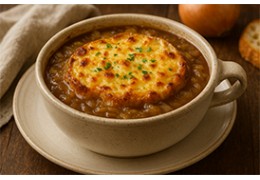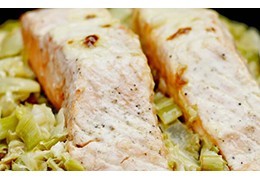Food and wine pairing: Flemish carbonade
While beer is traditionally used in its preparation, it can be perfectly replaced at the table by a well-chosen wine, capable of embracing this intensity while bringing balance and freshness. The objective here is to compose a tasty harmony where the wine, far from competing with the power of the dish, reveals its depth without adding heaviness.
.Let's discover the best food and wine pairings with Flemish carbonnade.
Carbonnade flamande relies on a complex balance between sweetness and bitterness, sweetness and spice, mellowness and creaminess. Beef simmered for a long time in beer becomes melt-in-the-mouth, while candied onions and brown sugar provide an intense sweet-savory background. Gingerbread, often spread with mustard, adds a distinctive aromatic touch, with notes of cinnamon, cloves and even licorice. The sauce, thick and dark, carries with it accents of roast and yeast that recall the best simmered dishes of peasant tradition.
.This dense, enveloping character calls for wines capable of sustaining the richness of the dish, with a fleshy body, a spicy frame and a supple tannic structure. Red wines are obviously at the forefront, but some full-bodied or slightly oxidative whites may also be suitable, provided they are not dominated by their acidity.
.Cahors wines, like those from the domaine Cosse et Maisonneuve, based on Malbec, are ideal allies for carbonnade: fleshy, deep, with a rustic touch that matches that of the dish. In Marcillac, Fer Servadou yields fresher but well-spiced reds, while Gaillac offers cuvées blending Duras, Braucol and Prunelard, perfect for accompanying simmered, spicy cuisine.
The red organic wines from the Rhône Valley, dominated by Grenache, Syrah and Mourvèdre, deliver generous reds bursting with black fruits, garrigue and peppery notes. Organic wines from these terroirs offer enough structure to stand up to carbonnade, while also providing warm aromatic relief. The Rasteau du domaine Pique-Basse, with its cocoa and prune accents, is a particularly seductive partner.
For a fresher, more digestible, but equally tasty pairing, we can turn to Beaujolais crus vinified in traditional maceration. A well-developed Morgon du domaine de la Bonne Tonne from a schist or granite soil will develop aromas of undergrowth, soft leather and jammy black fruits that are the perfect match for a carbonnade sauce. Organic estates such as Jean Foillard or Mee Godard offer cuvées that are both deep and digestible.
Loire Cabernet Franc, when vinified in a ripe, velvety expression without excess greenness, can accompany a carbonnade with elegance. Their natural freshness balances the richness of the dish, while their aromas of roasted bell pepper, black cherry and sweet spices echo the ingredients of the stew.
For the reds, a serving temperature between 15 and 17°C is ideal. It's advisable to open them an hour before the meal and decant them lightly if they are young vintages. Structured whites can be served at around 12°C. In all cases, avoid wines that are too young, too acidic or too woody, as these will upset the balance of the dish.






